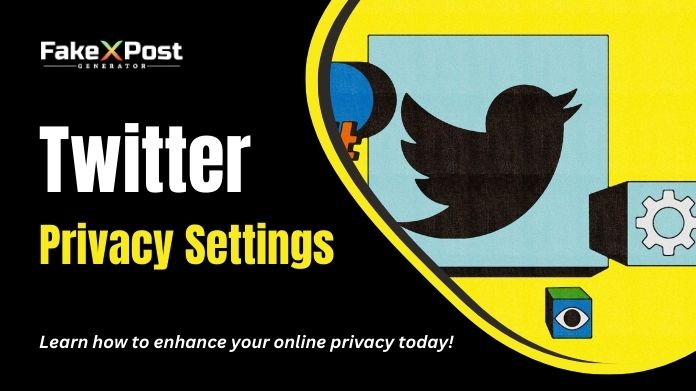Twitter is a powerful platform for connecting, sharing information, and engaging in conversations. However, ensuring your privacy and security on Twitter is essential in today’s digital landscape. By enabling the correct privacy settings, you can control who sees your tweets, who can interact with you, and how your personal information is handled.
In this guide, we will explore 5 Twitter privacy settings you should enable to enhance your privacy and protect your online presence. These settings are designed to give you more control over your account and reduce the risk of unwanted interactions or exposure.
From controlling who can tag you in photos to managing who can send you direct messages, these privacy settings empower you to tailor your Twitter experience according to your preferences. You can enjoy a safer and more secure experience on the platform by taking proactive steps to safeguard your privacy.
Whether you’re a casual user or a business professional, understanding and implementing these privacy settings can help you navigate Twitter more confidently while safeguarding your personal information.
Let’s dive into the details of these essential privacy settings and how you can enable them to protect your Twitter account.
What is Twitter Privacy Settings?

Twitter privacy settings refer to a range of controls and options that users can customize to manage their privacy and security on the platform. These settings allow users to control who can see their tweets, interact with their content, and access their personal information.
Some standard Twitter privacy settings include:
Tweet Privacy: Users can choose to make their tweets public (visible to everyone), protected (visible only to approved followers), or viewable only by specific accounts (via direct message).
Account Visibility: Users can control who can find and follow them on Twitter. Options include allowing anyone to follow, requiring account approval for followers, or blocking specific accounts from following.
Tagging and Mentions: Users can manage who can tag them in photos, videos, or tweets and control who can mention them in tweets or replies.
Direct Messages: Users can set privacy preferences for direct messages, such as allowing messages from anyone, only from followers, or requiring mutual follows for messaging.
Data and Privacy: Twitter offers settings to manage data sharing, ad personalization, location information, and account security measures like two-factor authentication.
By adjusting these privacy settings according to their preferences, users can enhance their online safety, reduce unwanted interactions, and maintain better control over their Twitter experience.
It’s essential for users to regularly review and update their privacy settings to ensure their account remains secure and aligned with their privacy preferences.
5 Twitter Privacy Settings You Should Enable Right Now
Here are five essential Twitter privacy settings that you should consider enabling right away to enhance your security and privacy on the platform:
1. Protect Your Tweets
- Go to your Twitter settings and privacy section.
- Under the “Privacy and Safety” tab, find the “Tweet privacy” option.
- Enable the “Protect your Tweets” setting to make your tweets visible only to your approved followers.
2. Control Who Can Tag You in Photos
- In the same “Privacy and safety” section, locate the “Tagging” option.
- Choose whether you want anyone to tag you in photos or only allow people you follow to tag you.
3. Manage Who Can Reply to Your Tweets
- Under the “Tweet privacy” settings, you can control who can reply to your tweets.
- Options include allowing everyone to reply, only people you follow, or only people you mention.
4. Adjust Direct Message Settings
- Navigate to your “Privacy and Safety” settings and find the “Direct Messages” section.
- Choose whether you want to receive direct messages from anyone, only people you follow, or only people you mention.
5. Secure Your Account with Two-Factor Authentication
- Enhance your account security by enabling two-factor authentication (2FA).
- Go to your account settings, select “Security and account access,” and set up 2FA using your preferred method (SMS, authenticator app, etc.).
By enabling these privacy settings, you can control who sees your tweets and who can interact with you and enhance the overall security of your Twitter account. Regularly reviewing and updating your privacy settings is crucial to maintaining a safe and enjoyable experience on the platform.
Final Note
Enabling the correct privacy settings on Twitter is crucial for safeguarding your online presence and ensuring a secure and enjoyable experience on the platform. By implementing the five essential Twitter privacy settings discussed, you take proactive steps to protect your information, control your interactions, and enhance your overall privacy on Twitter.
Protecting your tweets, managing tagging and mentions, controlling who can reply to your tweets, adjusting direct message settings, and securing your account with two-factor authentication are key measures to enhance your account’s security and privacy.
Regularly reviewing and updating these settings according to your preferences and needs is essential as you navigate the dynamic landscape of social media. By staying informed and proactive about privacy settings, you can mitigate risks, reduce unwanted interactions, and have more control over your Twitter experience.
Remember, your privacy and security are paramount, and Twitter provides these tools to empower users to manage their digital footprint effectively. Take charge of your privacy settings today to enjoy a safer and more secure Twitter experience.
